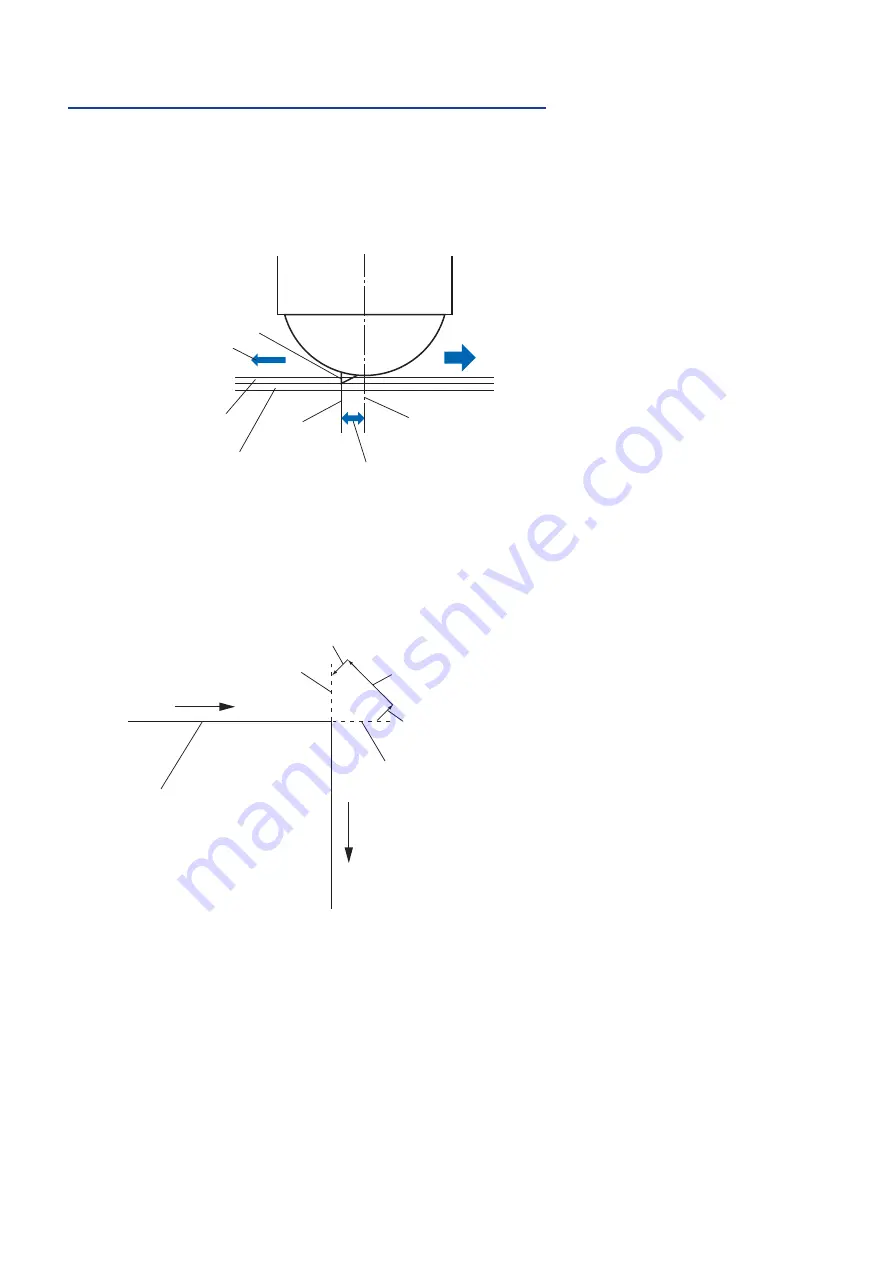
2-70
Outline of Tangential Emulation (TANGENTIAL MODE)
The blade needs to be facing toward the direction of cut when cutting the media. The tip of the blade is shaped
as shown so the blade is facing the cutting direction even when it is cutting curved lines or corners. The tip of
the blade is off from the rotation axis of the blade (CUTTER OFFSET). The blade will automatically turn and face
the cutting direction when the tool carriage moves, because the blade is forced to move from the rotation center,
and the blade tip gets resistance by the media.
Tool carriage
Direction of movement
Toll rotation axis
Cutter offset
Position of
the blade
Backing sheet
Resistance from media
Resistance from
media
Blade
The blade tip gets sunk into the media with 0.3 mm or thicker, making the blade hard to rotate. Especially for the
corners where two straight lines meet, cutting becomes very hard because it cannot rotate smoothly.
Tangential emulation is a control method to precisely cut corners where two straight lines meet. (See below)
With the tangential emulation, the blade is advanced so it will overcut at the corners before raising the tool.
Then, it will be lowered at the position slightly before the next line, and start to cut with slight overcut.
Tool down
(2) Tool movement
Tool up
(3) Direction of the tool
Original cut line
(1) Direction of the tool
Over cut
Over cut
There are 2 modes for tangential emulation.
Mode 1 ..................... Overcuts the start and end points and acute-angle corners to eliminate uncut sections.
In addition, the cutter blade is moved on the surface of the medium during cutting
ZKHQLWLVURWDWHGVLJQLÀFDQWO\HQVXULQJVKDUSFXWWLQJXQDIIHFWHGE\WKHKDUGQHVVRU
thickness of the media.
Mode 2 ..................... Overcuts the start and end points only. In addition, the cutter blade is rotated on the
medium surface for the start cutting position only. Mode 2 uses simpler cutter control
than Mode 1, and provides a shorter cutting time.
The length of the overcuts by tangential emulation can be set individually for start of the line and for end of the
line.
































